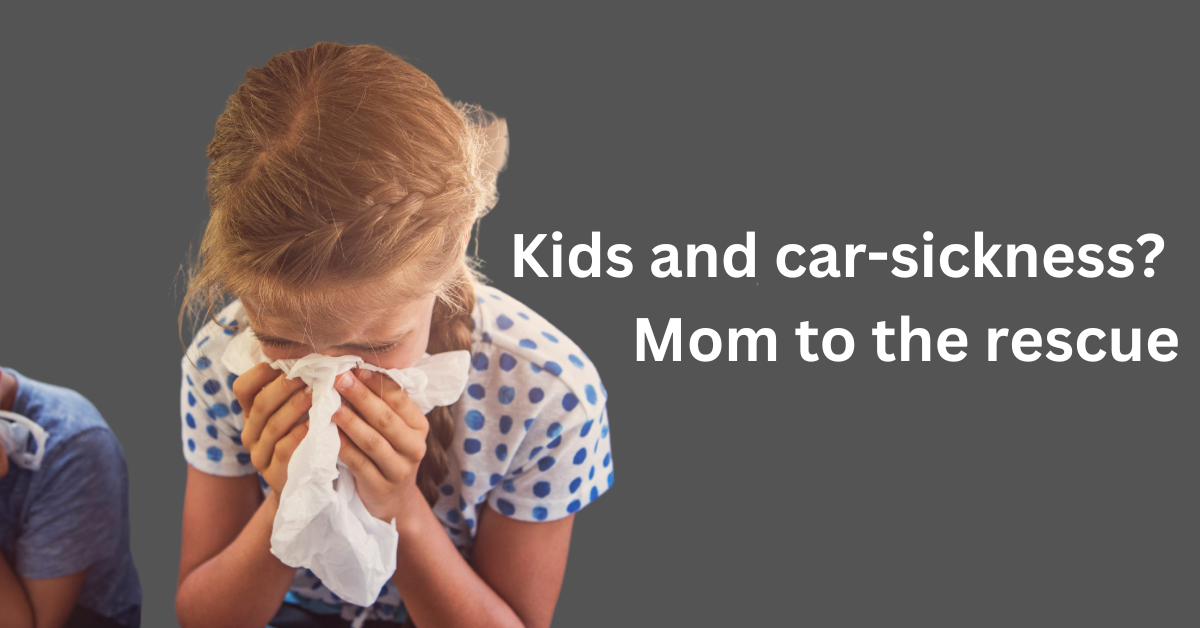Here’s a weird secret about the human body: if your nervous system is confused about where your head is, it can feel like nausea, car-sickness, or vertigo.
This is the effect that carnival rides use to create exciting sensations in our body. But for some people these effects can be felt in just normal car rides.
Here are two stories from my practice about car-sickness, one in an infant, and one in a teenager. And the surprising solutions their moms’ found that took their problem away.
Feeling queasy? Motion sickness to the point of vomiting in a 14 year old boy

T is 14 and has had motion sickness nearly every time he has been in a car… Ever since he’s been little!
If he rode longer than 30 or 40 minutes, there would be a 20% chance he’d throw up. That number is very, very specific, because when you end up getting sick in the car regularly, you start to keep track of when it happens.
When T’s mom found out there was a potential link between vertigo, motion sickness, and neck alignment (more on that below), she leapt at the chance to get T’s neck assessed.
Sure enough, T had a large forward lock of his second neck bone and an associated tilt in his head.
The question was would a new neck alignment help? The answer was a definitive yes!
After one release to the top of T’s neck (his first ever), 14 years of motion sickness in the car has melted away. Months after that first release he is still car sickness free.
The baby who would not stop crying in the car

Every parent knows what a nightmare it can be when this happens…
Stuck in traffic, late for an appointment, and in the backseat there is a two-month-old infant crying and she will not stop. Nowhere to go to help the situation, you just listen…powerless.
After dealing with this situation far too often, a new mom called me with a theory that she thought might be crazy—but she needed to talk to someone.
“I think there’s something wrong with my baby’s neck” she said over the phone.
“It’s possible,” I said… “What makes you say that?”
The mom told me about crying frequently when placed in the car seat, a good clue.
Then she said this: “There are times when Baby M moves her head, and then her cry will change for a minute and she will just freeze…She just looks uncomfortable.”
She wanted me to check her baby’s neck. “Of course,” I said “Yes, bring her in.”
Little baby M was a little over two months old, a little peanut, and a ball of energy. Mom recounted the length of her labor, which was long and exhausting. When mom put Baby M into her car seat and pulled her out, she was clearly grumpy.
Laying her on her back, her muscle balance and tone felt normal and symmetrical in her legs.
But her torso felt tight on one side. She had a small pinch of muscle tension between her shoulder and her neck on the left. And she had a small band of pea sized inflammation under her right jaw.
Together Baby M’s mom and I watched her head movements for a few moments. As she looked up and off to one side she would grunt like an old man who had clearly moved the wrong way.
“When I was riding in the car in the back while her dad was driving, I would notice that Baby M hated going around curves.”
“That’s interesting”, I said. “What do you mean?”
“She would cry more often going around turns…Especially if we were going fast.”
“Kind of like she was car sick?” I asked.
“Yes.”
“Well, I’ve certainly known adults who’s sensation of car sickness is worse when the neck is out…Let’s work on her and see what happens.”
Mom helped me gently lay Baby M on her right. With small wrist pressure under her right jaw, I felt the tiny joints of her upper neck let go of tension. We moved her to her left and, did the same at the junction between her lower neck and her shoulder.
We laid her on her back and let her rest a minute or two.
Then I picked Baby M up and held her mid back as I put her into her car seat. I wanted to feel the movement and see if the tension built as I moved her into a seated position. I felt her mid-section tighten as I raised her feet to get her back into the car seat.
Pulling her back out again, I felt a small fixation between her T5-T7 vertebrae in her mid-back. A small instrument tap on the right and left side quickly unlocked her torso.
“Let’s do this again in a week” I said. So we did.
Baby M’s mom called me after the second visit to let me know that they just did a long car ride, and the baby didn’t cry at all…Not getting into the car seat. Not getting out. And not even going around turns. “She doesn’t act like her neck gets stuck anymore, either.”
Overall, a win. She may never know it, but Baby M owes her mom some appreciation for spotting something so subtle, that most physicians miss it.
Even babies can have neck problems that cause pain. And from what we know about the importance of movement, tummy time, and balanced muscles for moving from crawling to walking, baby neck problems may cause even more than that if not corrected gently in infancy.
- Announcing the Winter Boot Drive of 2024 (to benefit homeless) - December 16, 2023
- Thoughts determine the quality of life – Tips for new patients (Part 8) - September 18, 2023
- Why hasn’t anyone told this to me before? Tips for new patients (Part 7) - September 18, 2023


